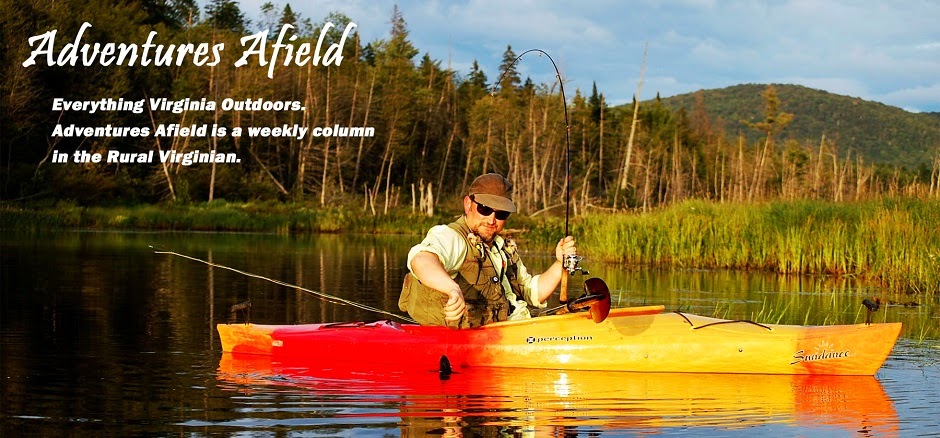At the close of every summer, water levels
drop, rain becomes scarce, and leaves begin to wilt on the trees. October comes, and brings with it rain; and
the flaming foliage that signals the beginning of fall beckons hunters to the
woods for the remaining months of the year.
With winter imminent, it’s easy to walk the expiring woods assuming that
bass fishing, for the year, has pretty much come to an end. Nothing could be further from the truth.
Take a trip back (time traveling is hard,
but do your best to keep up) to the month of February—cold, windswept, and
dreary—and try to remember your state of mind.
The out-of-doors can be described as “miserable” often. It seems as if someday will never come, and
the ice that seals the local ponds may just decide to stick around for
eternity—or longer—preventing any sort of fishing, ever. If you’re like me, you don’t have a bass boat
or a depth finder, but you try anyway, rarely catching, always freezing, and
suppressing your heart deeper into your body where it’s at least kept warm by
the blood that’s neglecting your ears and fingers.
Nevertheless, spring emerges from the
drizzly sky and frozen ground one day in March, and hope for sanity
returns. The magic 60-degree mark is
fast approaching; and bass have made the landmark decision to feed more than
once in a day.
Why So Great?
The same temperature that kicks off
traditional bass fishing in the spring also occurs in the fall, albeit from the
opposite direction.
As cooling air temperatures and cold,
drizzly rains become commonplace, water surface temperatures too begin to
cool. Because bass and their foodstuffs
are cold-blooded organisms, consistent daytime temperatures in the mid-sixties
and seventies will draw bass to the shallows, following forage following their
preferred environmental temperature.
Where to Fish?
Shallow water draws bass in the fall
because of cool temperatures. But all
lakes and ponds have shallow spots, so where are the best locations? Just as in the spring, it helps to tote a
water thermometer. Look for the coolest
temperatures, or those closest 60-65 degrees.
Coves, especially those readily accessible
from the main lake, are logical locations, as they provide an easy transition
from the bass’s deep summertime haunts.
Other spots include the upper ends of ponds
or lakes, or the arms fed by creeks.
Creeks provide an input of cool, oxygenated water that fosters small
aquatic invertebrates, which draw baitfish, and in turn, bass.
.JPG) |
| Photo by Matt Reilly |
Still, fall bass fishing may require a
run-and-gun technique. As surface
temperatures decline in late fall, it becomes rich in oxygen, more dense, and
falls in the water column, displacing the warmer, less-oxygenated water on the
bottom, which rises to the top for its turn.
This process, called a turnover, effectively oxygenates the entire water
column. This makes eliminating water
difficult in some regards, but there are some rules of thumb.
Until grassbeds and lily pads begin to
recede and wither, they represent good cover.
But as cooling water stops the growth of aquatic plants and they begin
to decompose, oxygen is consumed, leaving the peripheral water oxygen-depleted
and uncomfortable to exist in.
Baitfish and fingerling predator species
have grown to the size of a modest meal, and are more confident in rolling
about in shallow water, and even straying into open water. The busy wakes of such prey can been observed,
usually, and always represents a likely location for feeding bass.
What’s on the Menu?
Bass, like all other animals, have to
prepare nutritionally for winter. So
come late fall, “bigger meals and lots of them” becomes the dining philosophy. As aforementioned, baitfish in this season
are big meals, and there are lots of them.
Baitfish patterns—swimbaits, spinnerbaits,
large streamers—are thus the best options for netting a quality sack in the
fall. Remember to pause your retrieve
frequently to entice a bite, and to keep it in play as long as possible.
Mid to late fall represents to many anglers
a great chance to land a quality fish, but the month or more prior to the
advent of winter offers strength in numbers too. Keep an open and logical mind, and take
advantage of fall’s late and great bass bite.
Originally published in the Rural Virginian

